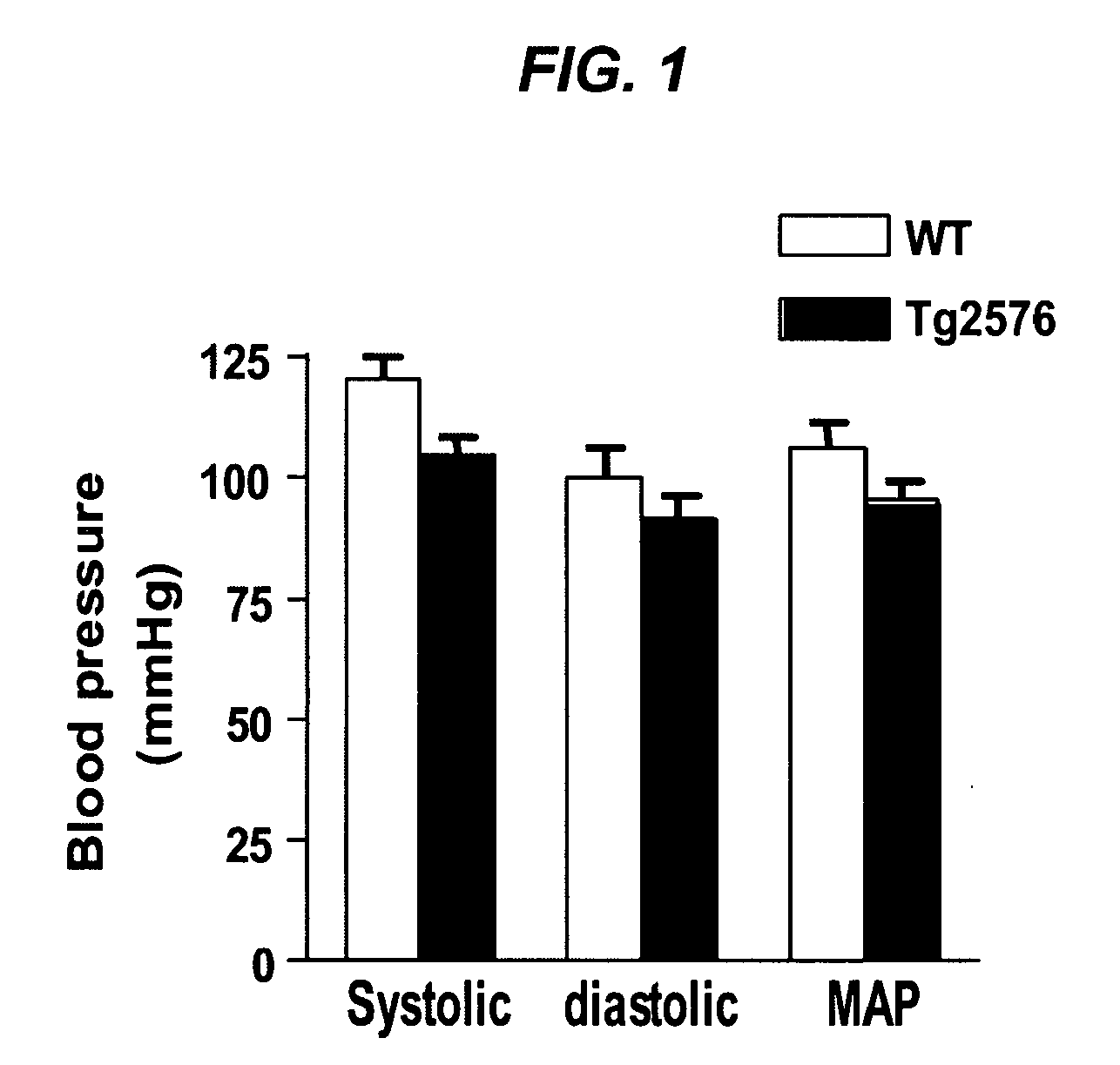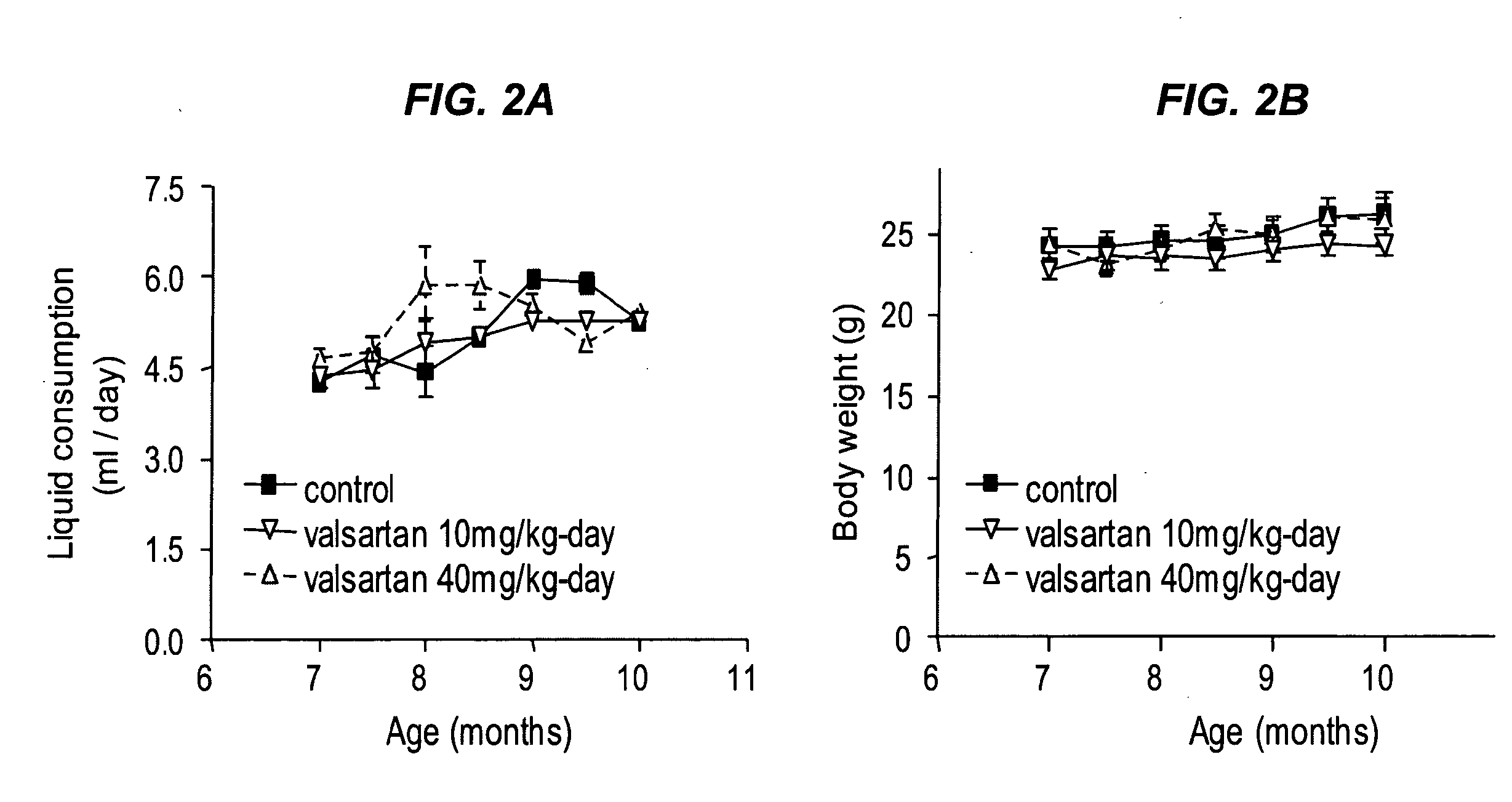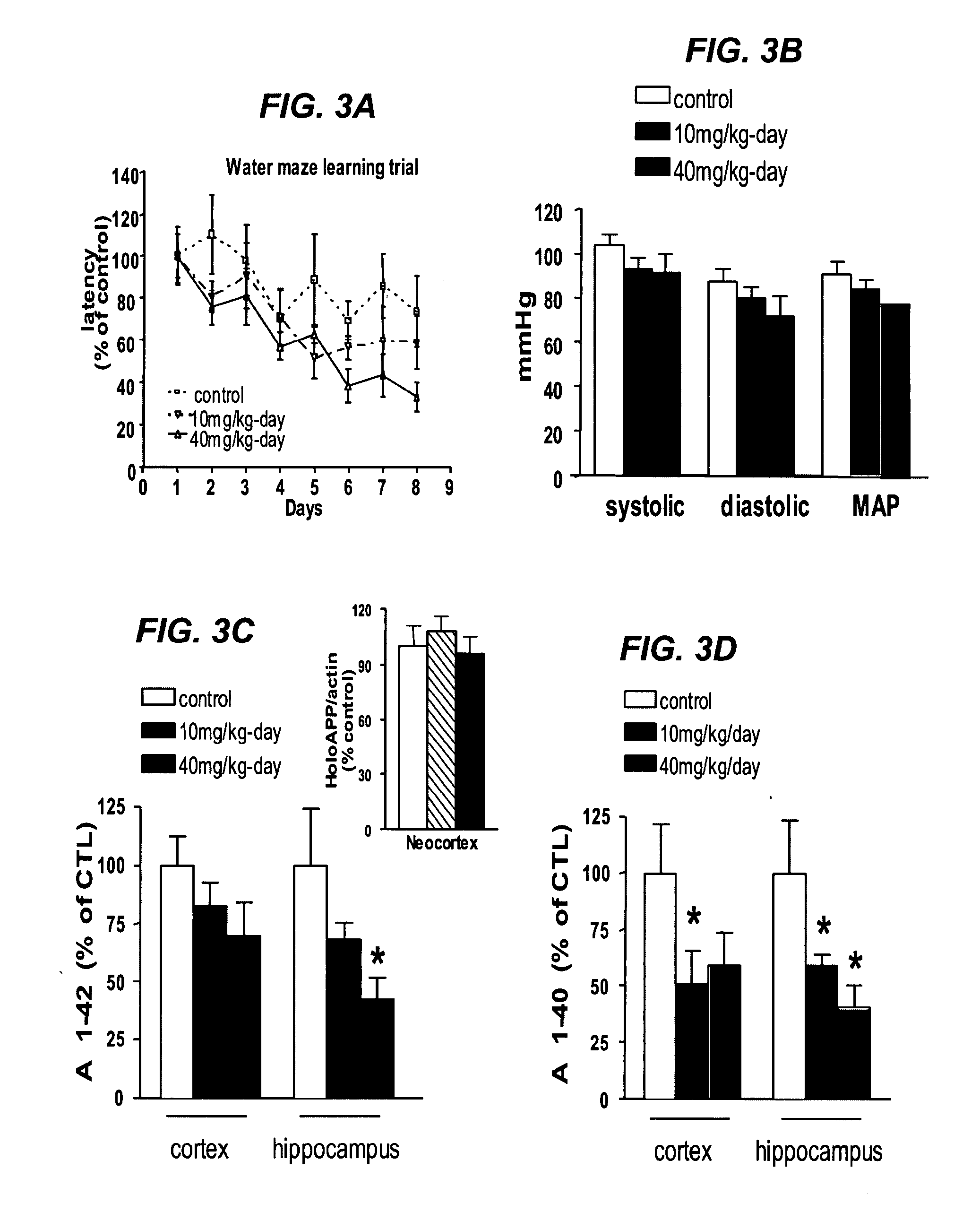Cardiovascular compositions and use of the same for the treatment of alzheimer's disease
a technology of cardiac compositions and compositions, applied in the field of cardiac compositions and use of the same for the treatment of alzheimer's disease, can solve the problems of paradoxical drop in blood pressure, inability to disclose the true nature of the relationship between dementia and blood pressure, and hypertension, so as to reduce the likelihood of ad amyloid neuropathy, reduce the amount of hmw a oligomer formation, and increase the clearance of a
- Summary
- Abstract
- Description
- Claims
- Application Information
AI Technical Summary
Benefits of technology
Problems solved by technology
Method used
Image
Examples
example 1
Initial Investigations
Identification of Aβ-Lowering Activities in Commonly Prescribed Cardiovascular Agents
[0116]The present invention was based on an exploration of the potential Aβ-lowering activity of 150 commercially available cardiovascular agents. The compounds tested represent a wide spectrum of pharmacological profiles, one of which is antihypertensive activity. Initially, 57 cardiovascular agents were identified as being capable of significantly reducing Aβ1-40 and / or Aβ1-42 generation (by ≧15%) in primary cortico-hippocampal neuron cultures generated from Tg2576 AD mice, a well-recognized model of AD.
[0117]Based on the initial results, further studies were conducted to assess the “secondary dose-response screening” of the 57 candidate agents for Aβ-lowering activity. The effective concentrations of agents resulting in a 50% inhibition (EC50) of Aβ1-40 and for Aβ1-42 content in the conditioning medium of the neuron cultures were calculated, relative to parallel vehicle-trea...
example 2
Further Investigations
[0137]Based on the results shown in Example 1 and the fact that fact that Aβ neuropathology is a major hallmark in the AD brain and a major target for pharmacological intervention, a high throughput drug screening of 55 of the most commonly prescribed antihypertensive drugs aimed at identifying Aβ-lowering activity (Table III). From this high-throughput dose-response screening studies (Table IV), the inventors found that 7 out of the 55 antihypertensive drugs examined were capable of significantly reducing Aβ1-42 and / or Aβ1-40 steady state levels in the conditioned medium of primary cortico-hippocampal neuron cultures generated from Tg2576 embryos (E14), relative to parallel vehicle-treated control primary neuron cultures. Most importantly, we found that each of the 7 drugs exerted dose-dependent Aβ-lowering activity with a predicted drug concentration resulting in 50% Aβ1-42 and / or Aβ1-40 inhibition (EC50) at low μM range (Table IV). No apparent neurotoxicity ...
example 3
Valsartan Lowers Brain β-Amyloid and Improves Spatial Learning in a Mouse Model of Alzheimer's Disease
[0164]The above studies show that some antihypertensive medications may reduce the risk for Alzheimer's disease (AD). The inventors screened 55 clinically prescribed antihypertensives for AD-modifying activity using primary cortico-hippocampal neuron cultures generated from the Tg2576 mouse AD model. The agents represented all drug classes used for hypertension pharmacotherapy. 7 antihypertensive agents were identified that significantly reduced AD-type amyloid beta-protein (Aβ) accumulation. Through in vitro studies, it was found that valsartan, one of the seven candidate drugs from the high throughput drug screening, is also capable of attenuating oligomerization of Aβ peptides into high-molecular-weight (HMW)—oligomeric peptides, known to be involved in cognitive deterioration. It was found that preventive treatment of Tg2576 mice with valsartan significantly reduced AD-type neur...
PUM
| Property | Measurement | Unit |
|---|---|---|
| solubility | aaaaa | aaaaa |
| concentrations | aaaaa | aaaaa |
| weight | aaaaa | aaaaa |
Abstract
Description
Claims
Application Information
 Login to View More
Login to View More - R&D
- Intellectual Property
- Life Sciences
- Materials
- Tech Scout
- Unparalleled Data Quality
- Higher Quality Content
- 60% Fewer Hallucinations
Browse by: Latest US Patents, China's latest patents, Technical Efficacy Thesaurus, Application Domain, Technology Topic, Popular Technical Reports.
© 2025 PatSnap. All rights reserved.Legal|Privacy policy|Modern Slavery Act Transparency Statement|Sitemap|About US| Contact US: help@patsnap.com



